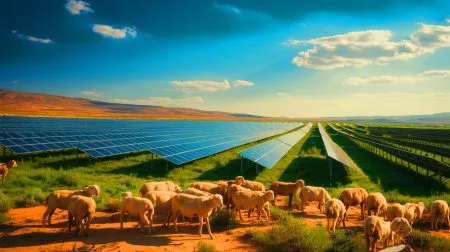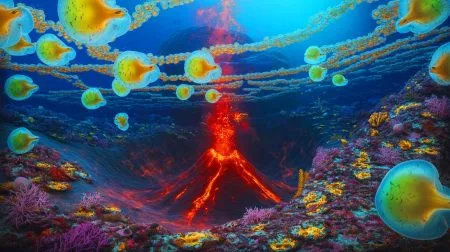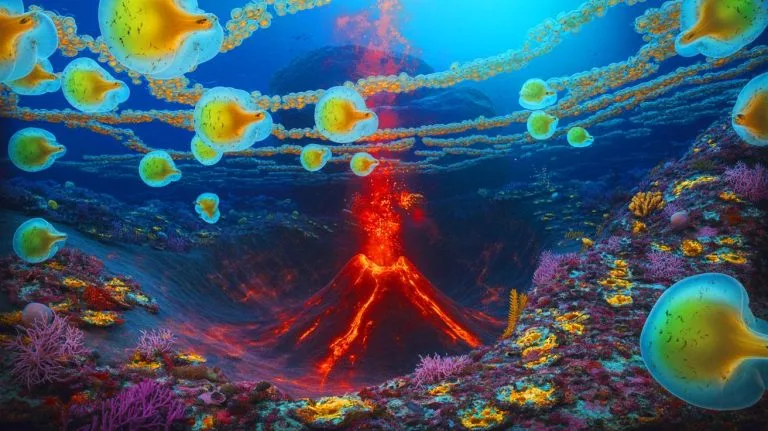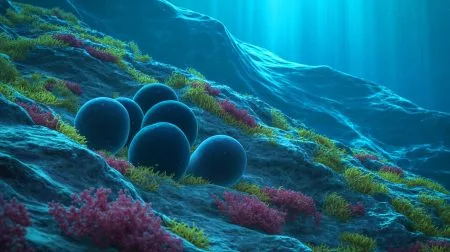| IN A NUTSHELL |
|
The depths of the ocean continue to be a source of endless fascination and discovery. Recently, a remarkable revelation occurred off the coast of Vancouver Island, Canada, where an underwater volcano exposed thousands of giant eggs belonging to the elusive Pacific white skate. These eggs, often referred to as “mermaid’s purses,” offer a glimpse into the complex ecosystems that thrive in the extreme conditions of the ocean’s depths. As researchers investigate this stunning discovery, they uncover insights that could transform our understanding of marine biodiversity and the intricate life cycles of deep-sea creatures.
The Astonishing Revelation of an Active Underwater Volcano
The underwater volcano near Vancouver Island, long assumed to be dormant, made a dramatic appearance during a 2019 expedition led by marine biologist Cherisse Du Preez. Rising about 3,600 feet from the ocean floor, this seamount is located approximately 0.93 to 0.99 miles beneath the ocean surface. The expedition revealed that the volcano emitted warm, mineral-rich waters, creating an unexpectedly diverse marine ecosystem. This geothermal activity plays a crucial role in the development of the giant eggs, which measure 18 to 20 inches in width and require a lengthy gestation period of four years.
The volcanic warmth serves as a natural incubator, accelerating the development of young Pacific white skates and providing them with a head start in life. This phenomenon illustrates the intricate interplay between geological and biological processes beneath the sea, showcasing how geological features such as underwater volcanoes can significantly influence marine life cycles.
Unique Traits of the Pacific White Skate
The Pacific white skate, scientifically known as Bathyraja spinosissima, inhabits the cold Pacific waters at depths ranging from 2,600 to 9,500 feet. Females of this species lay large eggs, investing significant energy to supply essential nutrients for their offspring, a process known as marine gigantism. Adult skates can grow up to 6.5 feet long, highlighting their adaptation to the harsh conditions of the deep ocean.
The warmth from the volcano’s shallower summit creates an ideal environment, described by Cherisse Du Preez as “almost a coral garden and a safe nursery for juveniles before they descend into the deep.” This setting emphasizes the important role these volcanic habitats play in the early life stages of skates. A similar occurrence was noted in 2018 near the Galápagos Islands, where eggs over 4 inches were found near hydrothermal vents, suggesting that volcanic heat is a common resource for various marine species during incubation.
Implications for Marine Research and Biodiversity
The discovery of this active underwater volcano and its function as a natural nursery provides new insights into the complexity of marine ecosystems. The geothermal warmth supports a unique biodiversity, allowing scientists to study how such environments impact marine life development. The presence of these giant eggs in an active volcano suggests that underwater volcanic activity may play a more significant role in marine life cycles than previously understood.
In 2023, a follow-up expedition witnessed a Pacific white skate laying an egg at the Canadian site, revealing more about the reproductive behaviors of this enigmatic species. Evidence also suggests that multiple species utilize this unique site as a natural nursery, highlighting the broader ecological significance of these volcanic habitats.
The Future of Oceanic Exploration and Conservation
Understanding the intricate dynamics of these underwater ecosystems is essential for marine conservation efforts. The discovery of the Pacific white skate’s breeding ground within an active volcano underscores the need to protect these fragile environments. As climate change continues to affect ocean temperatures and ecosystems, preserving these unique habitats becomes even more crucial.
Researchers and conservationists must collaborate to ensure the sustainability of these ecosystems, which serve as vital sanctuaries for marine life. Future explorations may uncover even more hidden secrets of the deep, challenging us to rethink our relationship with the ocean. What other mysteries lie beneath the waves, waiting to be discovered?
Did you like it? 4.4/5 (30)








Wow, I had no idea that underwater volcanoes could serve as nurseries! 🐣
Wow, I had no idea that underwater volcanoes could serve as incubators for marine life! 🌋
18 to 20 inches? Those are some seriously giant eggs! How do they even get that big? 🤔
Why do the eggs take four years to gestate? Isn’t that unusually long for marine life?
This is fascinating! Can the volcanic activity pose any danger to the skates or their eggs?